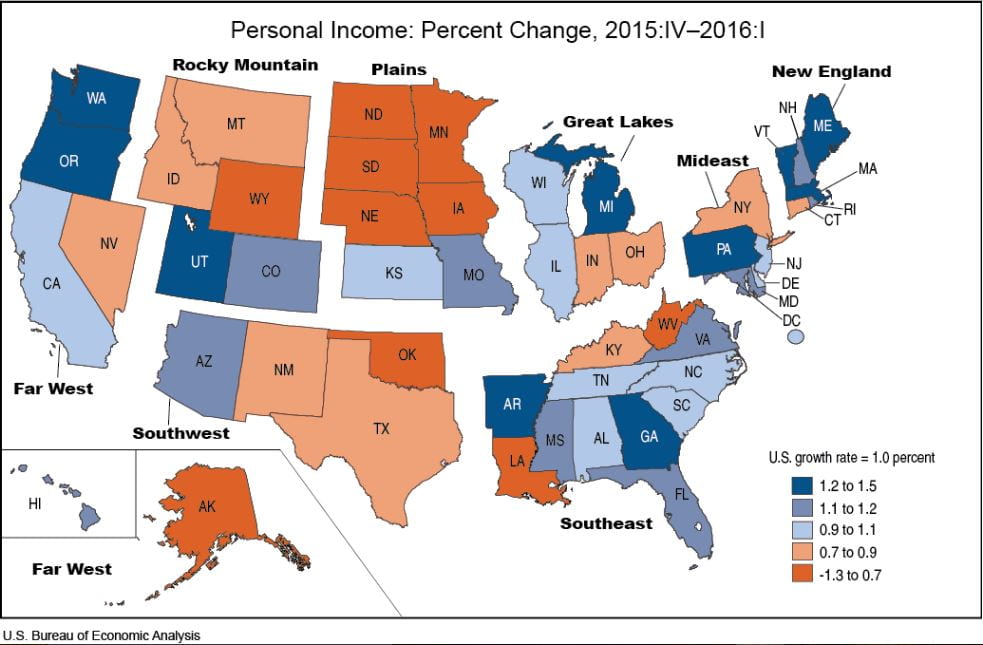The U.S. Bureau of Economic Analysis (BEA) released its figures of changes in state income for the first quarter of 2016. The aggregate change of income for all U.S. states was an increase of 1.0% over the fourth quarter of 2015.
The release shows how much a state’s income has risen or fallen in the first quarter of 2016, as well as each quarter of 2015. The BEA measures state income as the sum of net earnings by place of residence, property income, and personal current transfer receipts. Net earnings are wages, salaries, and current benefits like employer provided healthcare. Property income includes rental income, but also stock dividends and other interest income. Current transfer receipts include any benefits received from Federal, state, or local government, as well as private pensions.
It is always interesting to look for any regional patterns of growth. New England is slightly ahead of the rest of the pack, but the percentage increases in regional incomes are stacked rather closely together, with the exception of the Plains region, which is lagging behind the other regions.
The map below, provided by the BEA, reflects the chart above, with clearly larger increases in state income east of the Mississippi river. Indeed, three of the ten best performing states are in New England; Maine (1.4), Vermont (1.2), and Massachusetts (1.2). Five of the ten lowest performing states are in the Plains region; Minnesota (0.6), Iowa (0.5), Nebraska (0.5), South Dakota (0.3), and North Dakota (-1.3). In addition to North Dakota, Wyoming is the only other state that had its income reduced in Q1 2016 (-0.3). North Dakota and Wyoming have seen their state income decline each in four of the past five quarters, going back to the beginning of 2015. No other state has had decreased income in more than two of those quarters.
You can see where your state ranked for the year below. It is important to note that this report does not include the wage-growth numbers commonly reported by the media. Those numbers are collected and reported by the Bureau of Labor Statistics, and the focus is specifically on wage earners. The report on income from the Bureau of Economic Analysis takes a much broader look at income overall.
All data provided by the U.S. Bureau of Economic Analysis
[table id=7 /]


